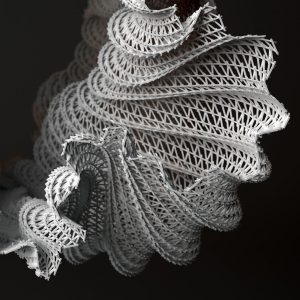sketch
function setup() {
createCanvas(600, 600);
}
function draw() {
background(0, 0, 0);
var Rc = map(mouseY, 0, height, 200, 260);
var Gc = map(mouseY, 0, height, 240, 255);
var Bc = map(mouseY, 0, height, 250, 255);
noStroke();
fill(Rc, Gc, Bc);
rect(0, 0, 600, 600);
var circSize =map(mouseY, 0, height, 0, 400);
var Rc1 = map(mouseY, 0, height, 260, 200);
var Gc1 = map(mouseY, 0, height, 255, 240);
var Bc1 = map(mouseY, 0, height, 255, 250);
noStroke();
fill(Rc1, Gc1, Bc1);
ellipseMode(CENTER);
ellipse(294, 242, circSize, circSize);
var topChop = map(mouseY, 0, 400, 92, 300);
stroke(198, 58, 61);
strokeWeight(9);
line(27, 60, 291, topChop);
var nood1 = map(mouseY, 0, 400, 76, 310);
stroke(221, 215, 153);
strokeWeight(6);
line(240, nood1, 240, 311);
var nood2 = map(mouseY, 0, 400, 76, 312);
stroke(221, 215, 153);
strokeWeight(6);
line(252, nood1, 253, 313);
var nood3 = map(mouseY, 0, 400, 76, 312);
stroke(221, 215, 153);
strokeWeight(6);
line(266, nood3, 266, 316);
var bottomChop = map(mouseY, 0, 400, 107, 310);
stroke(198, 58, 61);
strokeWeight(9);
line(5, 111, 292, bottomChop);
noStroke();fill (233, 231, 226);
rect (164, 261, 272, 8);
quad (175, 275, 210, 560, 386, 561, 428, 277);
noStroke();
arc(297, 561, 176, 10, TWO_PI, PI);
fill(194, 198, 89);
rect(182, 300, 3, 24);
rect(188, 300, 3, 24);
rect(194, 300, 3, 24);
rect(200, 301, 3, 24);
rect(207, 301, 3, 24);
rect(214, 302, 3, 24);
rect(222, 302, 3, 24);
rect(230, 302, 3, 24);
rect(239, 303, 3, 24);
rect(248, 303, 3, 24);
rect(257, 303, 3, 24);
rect(267, 304, 3, 25);
rect(277, 304, 3, 25);
rect(287, 304, 3, 25);
rect(297, 304, 3, 25);
rect(307, 304, 3, 25);
rect(317, 303, 3, 25);
rect(326, 303, 3, 24);
rect(335, 303, 3, 24);
rect(344, 303, 3, 24);
rect(352, 303, 3, 24);
rect(361, 303, 3, 24);
rect(369, 303, 3, 24);
rect(377, 303, 3, 24);
rect(385, 302, 3, 24);
rect(392, 302, 3, 24);
rect(399, 301, 3, 24);
rect(405, 300, 3, 24);
rect(411, 300, 3, 24);
rect(417, 300, 3, 24);
fill(194, 198, 89);
rect(207, 501, 3, 24);
rect(214, 502, 3, 24);
rect(222, 502, 3, 24);
rect(230, 502, 3, 24);
rect(239, 503, 3, 24);
rect(248, 503, 3, 24);
rect(257, 503, 3, 24);
rect(267, 504, 3, 25);
rect(277, 504, 3, 25);
rect(287, 504, 3, 25);
rect(297, 504, 3, 25);
rect(307, 504, 3, 25);
rect(317, 503, 3, 25);
rect(326, 503, 3, 24);
rect(335, 503, 3, 24);
rect(344, 503, 3, 24);
rect(352, 503, 3, 24);
rect(361, 503, 3, 24);
rect(369, 503, 3, 24);
rect(377, 503, 3, 24);
rect(385, 502, 3, 24);
fill(198, 58, 61);
rect(272, 354, 79, 58);
arc(346, 374, 50, 40, PI+QUARTER_PI, HALF_PI);
ellipseMode(CENTER);
ellipse(263, 383, 59, 63);
quad(197, 408, 204, 462, 392, 465, 398, 408);
ellipse(248, 437, 59, 63);
ellipse(278, 437, 59, 63);
textSize(50);
textStyle(BOLD);
fill(255, 255, 255);
text("CUP", 248, 400);
textSize(38);
textStyle(BOLD);
fill(255, 255, 255);
text("NOODLES", 203, 450);
fill(177, 27, 38);
arc(208, 357, 36, 38, PI, TWO_PI);
textSize(8);
fill(255, 255, 255);
text("NISSIN", 195, 354);
strokeWeight(1);
stroke(198, 58, 61);
line(210, 535, 386, 536);
line(175, 289, 428, 291);
fill(255, 255, 255, 90);
noStroke();
quad(373, 272, 348, 568, 375, 564, 407, 272);
}
This project was pretty fun for me, though I did not know where to start with the commands and which commands to choose to make my code do what I wanted it to do. I enjoyed creating the cup of noodles especially, since I always eat cup noodles.

![[OLD FALL 2017] 15-104 • Introduction to Computing for Creative Practice](../../../../wp-content/uploads/2020/08/stop-banner.png)







